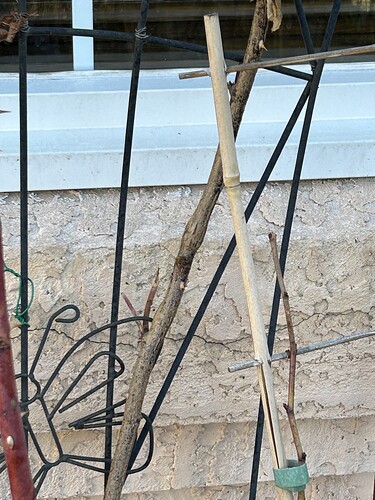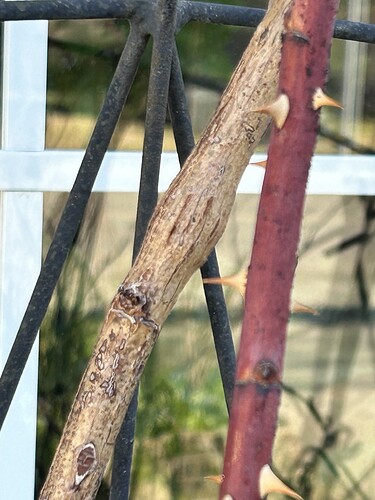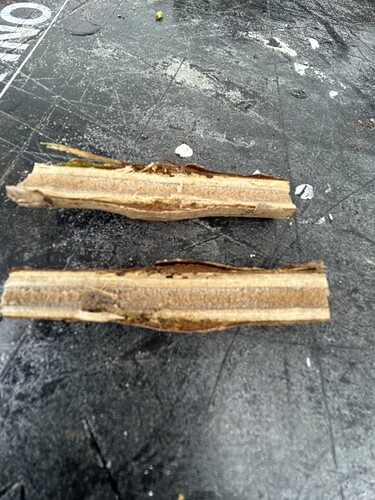One of my 10 year Lillian Gibsons has a “new to me” ailment that shows it’s evidence come spring. When an old cane shows single to repetitive enlargement nodes along longitudinal length it dies at lowest node.
Splitting of outer cane “bark occurs” widening it.
Cutting transverse along cane shows a thickening of the “bark layer” ( don’t think it is the cambium).
Its not gall wasp in my opinion - unless there is another version of it with no deformities growth “moss ball and larve chambers”.
Any suggestions what l am seeing?
1 Like
That looks a lot like rednecked cane borer damage to me. It’s a scourge of some varieties here (particularly the suckering native species, R. rugosa, and some of the sect. Synstylae, but not all of them), not to mention cane berries.
Stefan
2 Likes
The brown layer you see in the cane cross section is frass, the cambium layer after the borers have eaten it.
2 Likes
Txs, nice to have the cause of the problem.
Makes me now wonder how many times l have deemed a rose to have a marginally tender character when actually it been attacked in sections by this borer to the point of no return - the Lillians being a case in point for me.
They seemed to get more robust with age with 5 to 9 foot canes (depending on yard location) with healthy red “bark” being a characteristic.
Then crash dump next year with no real change in mean winter temperatures.
Only in this year spring did l notice the in series longitudinal spilt and swollen lymph like nodes on a dead 5 foot cane that last year was red healthy.
Red healthy means upper sections of newer cane when healthy, not the “older wooden textured bark canes lengths below”.
Never too long in tooth to learn.
Another set of singles on a second Lillian after having eyes opened. This is the “giant” Lillian (south bay window). Not yet breaking dormancy above while other canes are.
1 Like
Yep, that is textbook rednecked cane borer damage. Here, canes are getting hit over a good portion of the growing season. Many of the stems die quickly above the girdled point (sometimes they even become brittle and snap off), although some are either incompletely girdled or overgrow the damage and able to carry on anyway, for better or worse.
1 Like
Some may find photo addition today mildly interesting especially if you claim immunity in your garden.
Use to gloss over borer comments on other threads over the years and blame Lillian canes not breaking dormancy as rose being marginally tender rose. This episode counts as fool me once, shame on the beetles and my knowledge base … fool me twice ?
A longitudinal cut … shows, besides frash a “redneck beetle boring” mining drift - what a great name to play with - through cane cambium and beyond.
No more wooden 9 ‘ foot canes and shorter on 2nd star Lillian, … dirty rotters.
1 Like





